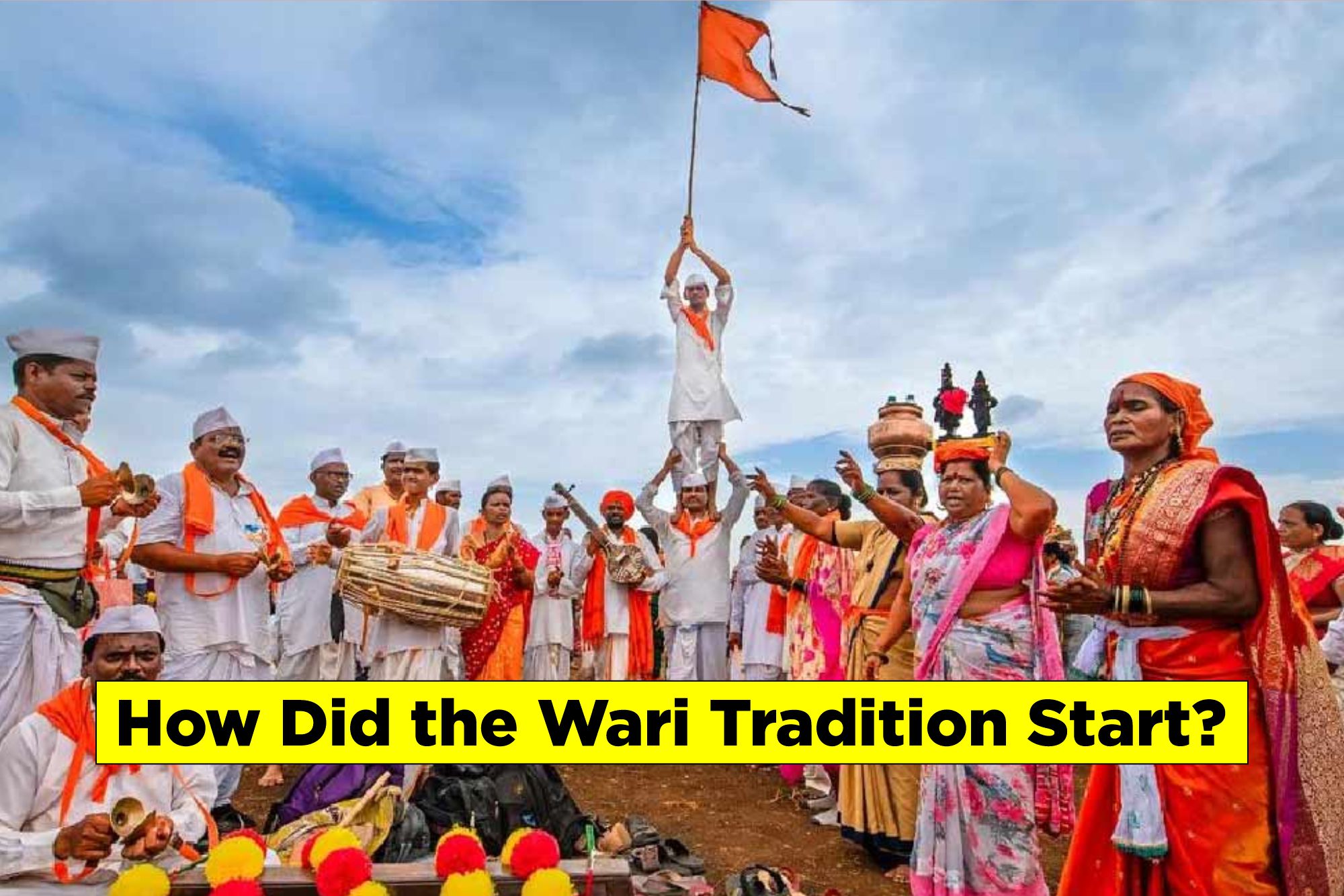How Did the Wari Tradition Start?
The Wari tradition, also called Vari Parampara, is one of the oldest and most beautiful pilgrimages in India. It is over 700 years old and is still followed with the same love and devotion today.
It all began with Sant Dnyaneshwar.
In the 13th century, Sant Dnyaneshwar, a young saint and poet from Maharashtra, became very popular for his spiritual wisdom and deep love for Lord Vitthal (Vithoba) of Pandharpur. After his death at a young age, his followers wanted to continue remembering him and his teachings. So they started carrying a symbolic palkhi (palanquin) with his paduka (holy footprints) from Alandi (his samadhi place) to Pandharpur, especially during the Ashadhi Ekadashi festival.
Then came Sant Tukaram, another great saint.
In the 17th century, Sant Tukaram from Dehu also became a famous Warkari saint. His songs (abhangas) full of love and devotion for Vitthal touched the hearts of thousands. After his death, his followers started another palkhi from Dehu to Pandharpur.
So now, the two main palkhis – one from Alandi (Sant Dnyaneshwar) and one from Dehu (Sant Tukaram) – travel to Pandharpur every year during the monsoon season.
Why is the Wari special?
The journey is not just about walking. It’s about walking together, singing, praying, and showing love for God. The people who walk are called Warkaris. They believe in simplicity, equality, and helping each other.
They walk for days, barefoot, in sun and rain, just to reach their beloved Vitthal standing in the Pandharpur temple with arms wide open.
A tradition of love and devotion
What started as a tribute to saints has now become a living tradition of devotion, unity, and service. Today, millions of people join the Wari every year, not because someone forces them, but because their hearts pull them to Vitthal.

